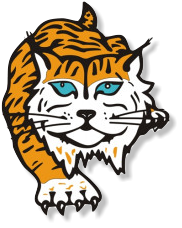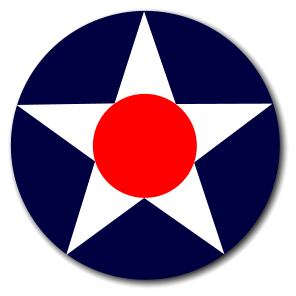 Grumman Owners and Pilots Association Grumman Owners and Pilots Association"Building on our proud AYA heritage..."
|
- Home
- Bahamas Relief Flight
AYA Bahamas Relief Flight
by Walt Porter
There we were, five Grummans in a loose formation heading for an airport, cleared for the right break for landing but there was a wall of water falling from the sky just to the right of the runway. Our inexperienced formation had to make a quick change to right echelon in order to break left away from the heavy rain…
It all started with a post on a social media site. The National Air Traffic Controllers Association members in Miami, Florida, had a load of relief supplies for the controllers in the Bahamas and were looking for pilots to deliver the supplies. AYA member Ross Brilakis saw the posting and contacted AYA Convention Co-Chair Matt Drahzal to see if the AYA could help during the convention. Matt sent an e-mail to the attendees asking for volunteers and five pilots answered the call. Former AYA safety director Ron Levy volunteered to be mission planner.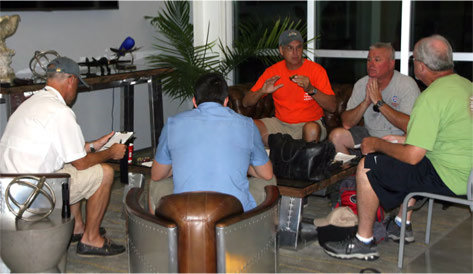
As it turned out, there was not enough time to do all the paperwork required to do the flight during the convention, so a decision was made to go on the day after the convention ended. Ron contacted the NATCA Chairman for Disaster Response, Tom Flanary, to get the details. He then prepared a PowerPoint briefing for those of us who signed up. Who knew a 45 minute flight to the Bahamas would require over four hours of paperwork preparation and submittal? First, there was the request to enter the Freeport Temporary Flight Restricted area. The request, the
Bahamas Civil Aviation Authority Temporary Flight Authorization Application Hurricane Dorian Relief form required six attachments; 1) Aircraft Certificate of Registration; 2) Certificate of Airworthiness; 3) Aircraft Insurance; 4) Pilot License; 5) Pilot Medical; 6) Pilot Passport. Fortunately, they accepted photographs of the documents, but it took quite a while.
Next there were all the US requirements. The Electronic Advance Passenger Information System (eAPIS) form had to be submitted, but first some of us had to update our passwords from the last time we used it, which was when the AYA convention was last in Canada, or open a new account. Once we could log into the system, we had to file for both US departure and return flights. While not required for domestic flights, international flights across the US border require an Aircraft Radio Station License, so some had to purchase one. Finally, a US Customs decal is required when using Customs services. To purchase a decal, you have to first open a Customs and Border Protection account, then open a purchasing account so you can purchase the decal. Fortunately, everyone was able to wade through the paperwork mire and we received permission to fly to the Bahamas.
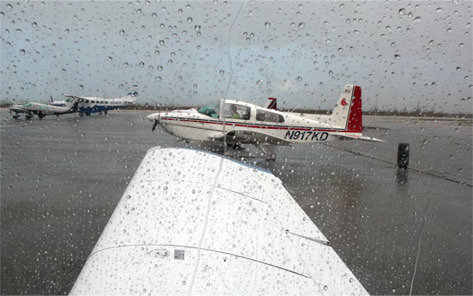 Meanwhile, another mission presented itself. We received a call from a fireman from Jacksonville who had equipment they had purchased for a fire department in Marsh Harbor, Bahamas. While we couldn’t fly the equipment to Marsh Harbor, we could fly it to Palm Beach where another aircraft would take it to Marsh Harbor. The issue was getting the equipment to Fernandina Beach from Jacksonville before our departure.
Meanwhile, another mission presented itself. We received a call from a fireman from Jacksonville who had equipment they had purchased for a fire department in Marsh Harbor, Bahamas. While we couldn’t fly the equipment to Marsh Harbor, we could fly it to Palm Beach where another aircraft would take it to Marsh Harbor. The issue was getting the equipment to Fernandina Beach from Jacksonville before our departure.
We had a few hours before the convention banquet, so we offered to fly to Craig Field in Jacksonville to pick up the equipment. It was our first flight as a formation, but we safely picked up the equipment and returned to Fernandina Beach in time for the banquet. It was a good learning experience and practice for our flight the next day.
Departure day arrived and we met at the airport before sunrise for the final briefing. Flight plans had been filed and we were ready to go. The two-hour flight to Palm Beach was uneventful. We arrived to find the fuel truck couldn’t drive, so each plane had to be towed to the truck, fueled, then towed to the loading area. The four generators, two compressors and various hand tools for the Marsh Harbor firemen were unloaded. The line workers at Signature Flight Support were great and went out of their way to help load and had pallets of cargo pre-weighed and ready for loading to the max gross weight of our aircraft. Our flight was delayed an hour due to the fuel truck issues, so the flight plans were updated, a return transponder code was obtained, and Customs was notified.
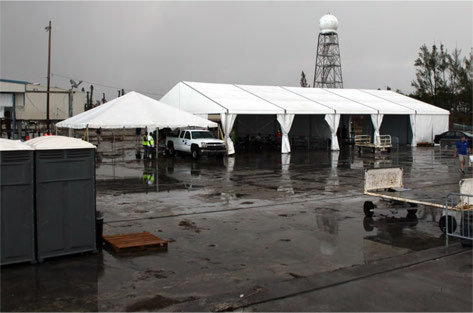
The flight departed to Freeport in beautiful weather, just a few scattered clouds and great visibility. We climbed to 7,500 feet for the flight over water. Since we were all fully loaded, about the time we reached 7,500 feet, it was time to head back down again. As we headed toward Freeport, we could see one cloud buildup, and it appeared it was where we were going. Meanwhile, as they had no radar at Freeport, all aircraft had to give position reports. The tower reported VFR conditions and gave us a right break to landing. We set up in a left echelon to prepare for the right break.
As we descended toward Freeport, we could see heavy rain just south (right) of the runway, making a right break unsafe as visibility was severely restricted. Lead sent out word to the flight to change to right echelon, though not all members got the word, so unfortunately the transition wasn’t smooth, but we eventually got lined up correctly and landed safely. The rain was so hard after landing that the tower couldn’t see the aircraft. We taxied to the ramp, if you could call it that, somehow avoiding a destroyed taxiway and finding a place where we could park together next to ‘Customs’- a white tent as all the hangars and buildings were destroyed.
We waited in the planes and the rain for about 10 minutes until it was just too hot and humid inside the cockpit, so we opened our aircraft and emptied our cargo in the rain, though it had subsided a bit. We waded through the three inches of water on the ramp to the Customs tent - basically a 20 x 40 foot tent with some folding tables and chairs for the workers. We made out manifests and arrival paperwork (making a carbon copy- remember carbon paper?). We had to declare what we brought and the value. Considering we really had no clue what the value of the cargo since we didn’t buy it, some of us were a bit creative. The cargo consisted of many cases of water, toilet paper, bleach, feminine products, MREs (Meals, Ready to Eat), soap, first aid supplies and more.
Following Customs, we moved to the next table for Immigration, where we turned in the carbon copy of the paperwork, and were logged into a giant ledger by hand. Our cargo was inspected and we were allowed to depart. We did not want to leave until the recipient of the cargo, the Freeport tower personnel, arrived to claim it. Finally a very appreciative controller arrived and had his photo taken with the five of us. Meanwhile the rain had begun again in earnest and we waited a little longer for it to subside. There was a lull, and we jumped in the planes and departed.
The weather on departure was the same as arrival so we had to turn left (north) out of the airport. Because of the wall of water south of the airport, we were unable to see any of the damage to the island other than the damage to the buildings and hangars at the airport. The weather on the way back was beautiful.
We climbed to altitude and contacted Miami Center to open our return flight plan. They couldn’t find it and told us to contact Palm Beach Approach when thirty miles out. Luckily we had been given a transponder code for the return flight, so we squawked that and continued. We contacted Palm Beach Approach 30 miles out as requested and they said call back at 20 miles. We tried calling back at 20 miles and they ignored us until nearly 15 miles out, then Approach proceeded to direct us south of the airport to keep us out of the way of departures and arrivals.
It appeared as if Approach didn’t know how to handle the flight of five airplanes, so they sent us nearly 15 miles west of the airport and one flight member wondered if we were going to Naples. He was also worried about the alligators as he felt we were heading across the Everglades. Approach didn’t offer us an overhead approach, which would be normal, so we went into extended trail for a straight-in landing, all the while being told to keep our speed up until short final. When we finally checked in with the tower, they offered the overhead approach, but we declined because we were already safely in trail.
After landing we taxied to Customs, which went smoothly since we were five empty airplanes. Other than our passports, no paperwork was checked. After clearing customs, we taxied back to Signature Flight Support and repeated the refueling drill. The trip back to Fernandina Beach was smooth, beautiful and relaxing after a stressful day of flying. We landed just as the sun was setting.
We received a couple of very nice emails and videos from the controllers in Freeport and were extremely pleased we were able to help them out. We learned a lot about paperwork, international flying and flying as a flight of inexperienced formation pilots. I’m sure we all would gladly do it again. The five pilots were: Walt Porter, Dennis Oparowski, Ross Brilakas, Kelly Wallace, and Matt Drahzal.
Quick linksJoin Us | Member Benefits | News | Events | Contact Us |
© 2026The Grumman Owners and Pilots Association.
